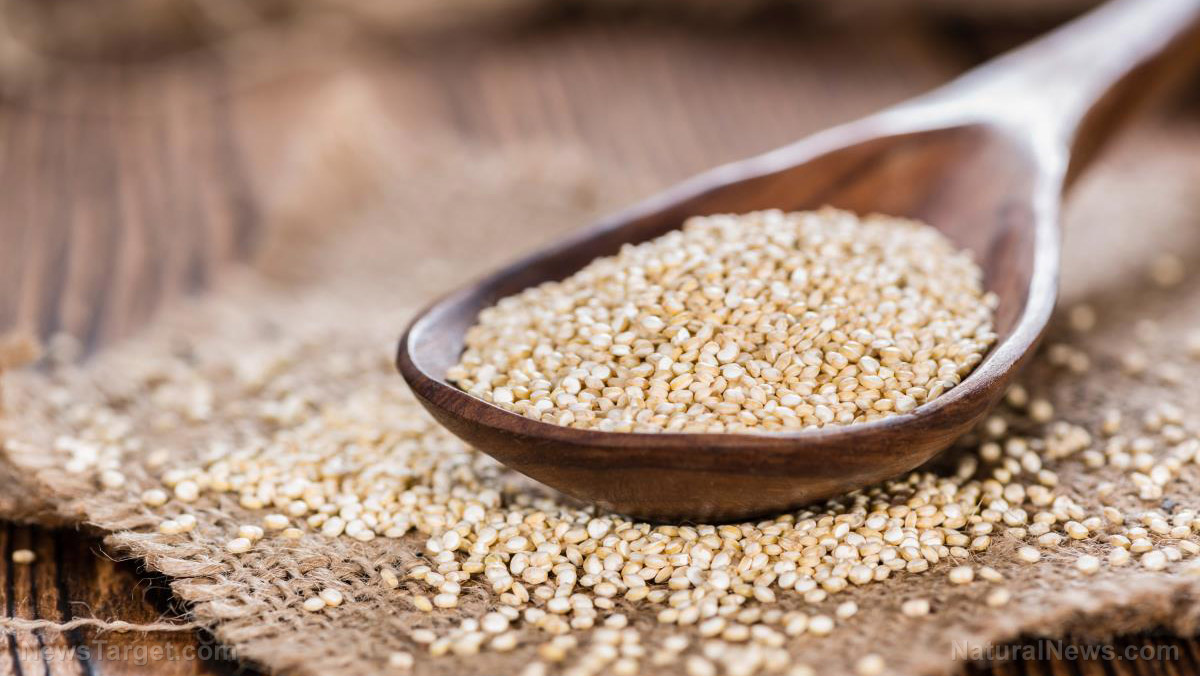Survival first aid: Food poisoning causes, symptoms and prevention
08/20/2021 / By Virgilio Marin

Food poisoning is a major threat to health in a world where sustenance comes in buckets of stored food. It is caused by ingesting food and water contaminated with harmful bacteria. Contamination happens due to improper food handling and frequently leads to food spoilage.
While people who have eaten contaminated food typically get better without treatment, some cases can be severe depending on the bacteria that caused the food poisoning. Here are the different types of bacteria that cause food poisoning. (h/t to PreppersWill.com)
Salmonella
Salmonella bacteria are commonly found in the intestinal tract and waste of livestock, poultry and common household pets. These bacteria come in around 2,000 different species but only ten of them are responsible for 70 percent of Salmonella poisoning in the United States.
Salmonella can cause flu-like symptoms like fever, chills, diarrhea and stomach pains. The first symptom is typically stomach pain and occurs six hours to two days after eating Salmonella contaminated foods.
Staph
Staphylococcus aureus (staph) is commonly found on the hands, in the nose and on infection sites like pimples. These bacteria don’t usually cause illness in healthy people but have the ability to produce toxins that can cause food poisoning. Staph food poisoning is frequently associated with starchy foods, cooked and cured meats, cheeses, custards and other food products left at room temperatures. Staph is commonly transmitted to food by food handlers who do not practice proper hygiene.
Symptoms of Staph food poisoning include severe vomiting, diarrhea and stomach cramps. They generally last for a day or so before the patient recovers.
Cafeteria germ
Clostridium perfringens is also called the “cafeteria germ” because it’s commonly found in foods served in large amounts and kept at room temperature. Foods like cooked beef, turkey, stew, gravy, dressings, stew and casserole are often associated with C. perfringens food poisoning.
Symptoms include abdominal pains, nausea and diarrhea and start eight to 22 hours after ingestion. They can last from 12 to 48 hours. Though most patients recover quickly, people with existing conditions like ulcers are advised to see a health professional if they suspect they have C. perfringens food poisoning.
Listeria
Listeria monocytogenes thrives in refrigerator temperatures and is mainly found in dairy products like milk, cheese and ice cream, as well as deli meats, melons and raw sprouts. Listeria infection, called listeriosis, is a potentially deadly disease known to cause meningitis, blood infection and miscarriage.
Symptoms of listeriosis are diverse. It can cause diarrhea and fever similar to other foodborne diseases. In invasive listeriosis, where the bacteria have spread beyond the gut, symptoms include headache, stiff neck, loss of balance, confusion and convulsions in addition to fever and muscle aches.
Clostridium botulinum
Clostridium botulinum is the bacterium responsible for botulism, a rare but fatal disease commonly caused by the consumption of improperly processed food. C. botulinum thrives in low-oxygen and low-acid environments like the soil and canned foods. It produces toxins that are harmful to the nervous system and cause symptoms like fatigue, headache, dizziness, double vision and trouble swallowing. Symptoms appear 12 hours to two days after eating contaminated food.
Tips for preventing food poisoning
The Centers for Disease Control and Prevention recommends the following tips to prevent food poisoning:
- Keep everything clean – Wash your hands and work surfaces before, during and after preparing food.
- Separate food items – Separate raw meat, poultry, eggs and seafood from ready-to-eat foods. Use separate chopping boards and keep raw meat away from other foods.
- Cook food – Cook food at temperatures of at least 165 degrees to kill harmful bacteria.
- Refrigerate – Refrigerate leftovers within two hours of cooking. Keep your refrigerator at 40 degrees or below.
Your survival hinges upon proper food hygiene, so it’s important to store your food preps properly. If food poisoning occurs, hydrate regularly to replace lost fluids and stick to bland foods like crackers.
Sources include:
Tagged Under: botulism, food contamination, food handling, food hygiene, food poisoning, food safety, preparedness, prepper, prepping, prevention, survival, tips
RECENT NEWS & ARTICLES
FoodStorage.News is a fact-based public education website published by Food Storage News Features, LLC.
All content copyright © 2018 by Food Storage News Features, LLC.
Contact Us with Tips or Corrections
All trademarks, registered trademarks and servicemarks mentioned on this site are the property of their respective owners.





















